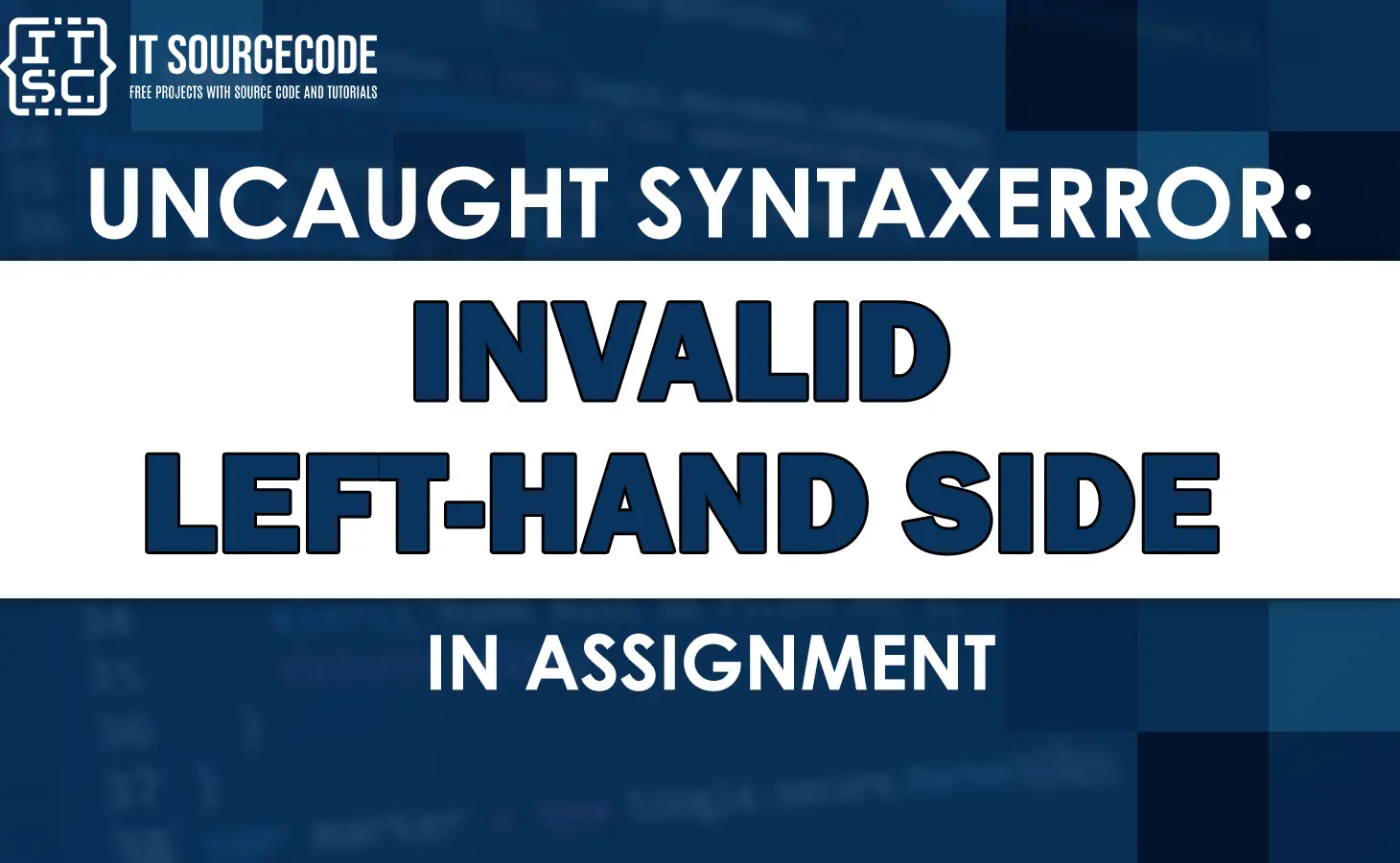The uncaught syntaxerror invalid left-hand side in assignment is an error message that is frequently encountered while working with JavaScript.
This error message is easy to fix however, if you’re not familiar with you’ll get confused about how to resolve it.
Fortunately, in this article, we’ll delve into the causes of this syntaxerror and solutions for the invalid left-hand side in assignment expression.
What is uncaught syntaxerror “invalid left-hand side in assignment”?
The error message uncaught syntaxerror invalid left-hand side in assignment happens in JavaScript when you make an unexpected assignment somewhere.
For example:
if (2 =< 10) {
console.log('yes')
}Here’s another one:
if (10 = 10) {
console.log('True')
}Output:
SyntaxError: Invalid left-hand side in assignmentThis error is triggered if you use just one or single equal sign “=” instead of double “==” or triple equals “===.”
In addition to that, this error message typically indicates that there is a problem with the syntax of an assignment statement.
Why does the “invalid left-hand side in assignment” syntaxerror occur?
The JavaScript exception invalid assignment left-hand side usually occurs when there was an unexpected assignment.
It is because you are using a single equal = sign rather than a double == or triple sign ===.
Invalid assignments don’t always produce syntax errors. Sometimes the syntax is almost correct, but at runtime, the left-hand side expression evaluates to a value instead of a reference, so the assignment is still incorrect.
How to fix the “uncaught syntaxerror invalid left-hand side in assignment”?
To fix the uncaught syntaxerror invalid left hand side in assignment expression error, you need to identify where the unexpected assignment is happening in your code.
This error may be triggered when a single equal “= “ sign is being used instead of double “==” or triple “===.”
Ensure that you are using the correct operator for the intended operation.
For example:
A single equal sign “=” is used to assign a value to a variable. Meanwhile, the double equal sign “==” or triple “===” operators are used to compare values.
Here are the following solutions which you can use as your bases when troubleshooting the error.
Solution 1: Use double equals (==) or triple equals (===) when comparing values in JavaScript
Incorrect code:
if (10 = 10) {
console.log('success')
}Corrected code:
✅ if (10 == 10) {
console.log('True')
}or
✅ if (10 === 10) {
console.log('True')
}Output:
TrueAs what we mentioned above, in JavaScript, the single equals sign (=) is used for assigning a value to a variable, while double equals (==) or triple equals (===) are used for comparison operations.
The single equals sign is interpreted as an assignment operator, not a comparison operator.
For example:
✅ const website = 'itsourcecode';
if (website === 'itsourcecode') {
console.log('True');
}Output:
TrueSolution 2: Use correct operator for string concatenation
Incorrect code:
const str = "Hi, " += "welcome to " += "Itsourcecode";
To resolve this error change the “+=” operator with the plus (+) operator for string concatenation
Corrected code:
✅ const str = "Hi, " + "welcome to " + "Itsourcecode!";
console.log(str);Output:
Hi, welcome to Itsourcecode!Note: The “+=” operator is used to add and assign a value to a variable, while the plus (+) operator is used for string concatenation.
Conclusion
In conclusion, the error message uncaught syntaxerror invalid left-hand side in assignment expression happens in JavaScript when you make an unexpected assignment somewhere.
It is because you are using a single equal = sign rather than a double == or triple sign ===.
To fix this error, you need to identify where the unexpected assignment is happening in your code and ensure that you are using the correct operator for the intended operation.
This article already provides solutions to fix this error message. By executing the solutions above, you can master this SyntaxError with the help of this guide.
You could also check out other SyntaxError articles that may help you in the future if you encounter them.
- Syntaxerror: multiple exception types must be parenthesized
- Uncaught syntaxerror: invalid shorthand property initializer
- Expression.syntaxerror: token comma expected.
We are hoping that this article helps you fix the error. Thank you for reading itsourcecoders 😊

